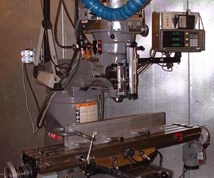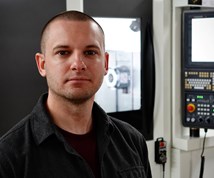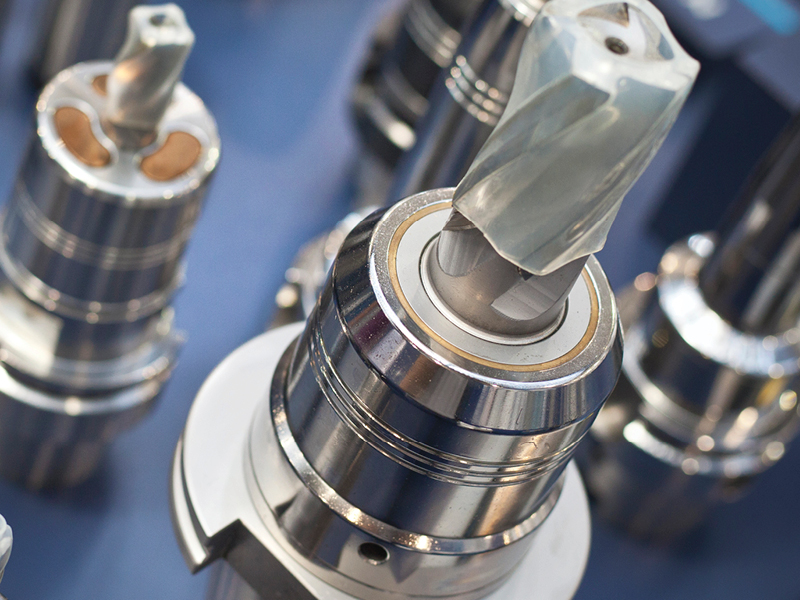Few shops begin their lives dedicated to micromachining. Instead, many that have found their niche in micromachining have done so by taking on jobs here and there that have slowly led them down the path toward micro-parts production. Many also might stumble and falter at times on this journey as they slowly learn the skills necessary to become efficient operating at the micro level. To help those of you who are new to micromachining, I sat down with Jeff Davis, Vice President of Engineering for Harvey Performance, to discuss the differences in approach that make this process not only possible, but profitable. He suggests you should:
Worry Less About Process Optimization
While shops tend to focus on the classic duo of speeds and feeds to minimize cycle time for conventional applications, it may not be best to focus on process optimization. Micro-tools break much more easily than larger ones, which means getting the optimal feed rate is much more difficult and time consuming, as the window of optimization is so much smaller. As in larger applications, choosing the right coating can improve tool life and tool performance, something Harvey Performance specializes in, but in micro applications the shop must make special considerations for the tool. After all, the time and money a shop loses replacing cutting tools negates any benefit that it might gain by optimizing the feed rate for micromachining.
Featured Content
Keep It Steady
According to Mr. Davis, runout is one of the most common problems that hinder a micromachining application. The slightest error in the rotation of the tool can snap a tool or scrap a part when there is so little room to work with. Keeping the machine tool as rigid as possible reduces runout, as does investing in rigid tooling. The company says that collet chucks and shrink-fit toolholders are an excellent idea, but almost any steps a shop takes to keep the cutting tool steady will return the investment.
Measure Twice, Cut Consistently
Accurate measuring systems are also a great investment for micromachining. As with any part, it’s difficult to achieve any sort of precision unless you know what shape your cutting tool is in. It is wise to measure both before machining and in process to ensure the reliability of the tool. That said, because micro-tools are comparatively delicate, it’s actually possible to damage them with touch probes in normal use. This makes non-contact measuring solutions wise investments.
Minimize the Vibration
Every shop has to compromise between vibration and process efficiency. According to the Mr. Davis, there are peaks and valleys in the vibration levels of a machine as the machining operation gets closer or farther from the natural resonance of the machine tool. While these high levels of vibration may be fine in a roughing pass on a larger part, they can ruin passes at the micro-scale. If the optimum spindle speed enhances the vibrations in the machine, it can be more productive to reduce the spindle speed to reduce the vibrations of the machine tool. Even if it slows the machine, the time saved in avoiding re-machining, scrapped parts or broken tools makes it more than worthwhile.
Know Your Material Supplier
In any given metalcutting application, the most intense point of wear on the cutting tool occurs when the edge makes contact with the with the material. The change in tool velocity that occurs when it impacts the workpiece creates a powerful impulse or change in force over a short period of time. Impulses can break micro-tools far more easily than larger tools, which means that even relatively small changes in force, as can happen when there are inconsistencies in the workpiece material, can severely damage the tool. “Hard pockets in the material can ruin a micro-tool, even if larger tools would be much less affected,” Mr. Davis says. “The only way to avoid this is to work with suppliers you trust to provide consistent material for your workpieces.”
In many ways, the move to micromachining means focusing on best practices. Of course you should try to reduce runout. Of course measuring is important for maintaining consistency. Of course you should have trusted suppliers that deliver quality materials. But while you should follow these practices in any machine shop, you must follow them in micromachining. There is simply not as much room for error in these operations
RELATED CONTENT
-
Cutting With A 0.001-Inch End Mill
JPL’s Space Instrument Shop does this routinely, but it takes some special equipment and some unusual procedures. Above all, it takes patience.
-
What is the Best Process for Micro-Deburring?
Various techniques address the challenge of getting a clean machined feature at microscopic scales.
-
Micromachining Evolution
Challenge Machine continues to add high-speed equipment for the increasing amount of micromachining work it is performing. Here are some lessons it has learned along the way, using tools as small as 0.001 inch in diameter.













 (1).1676494398075.png)

